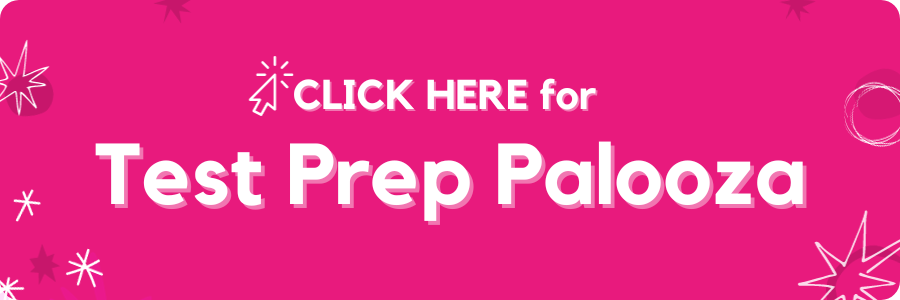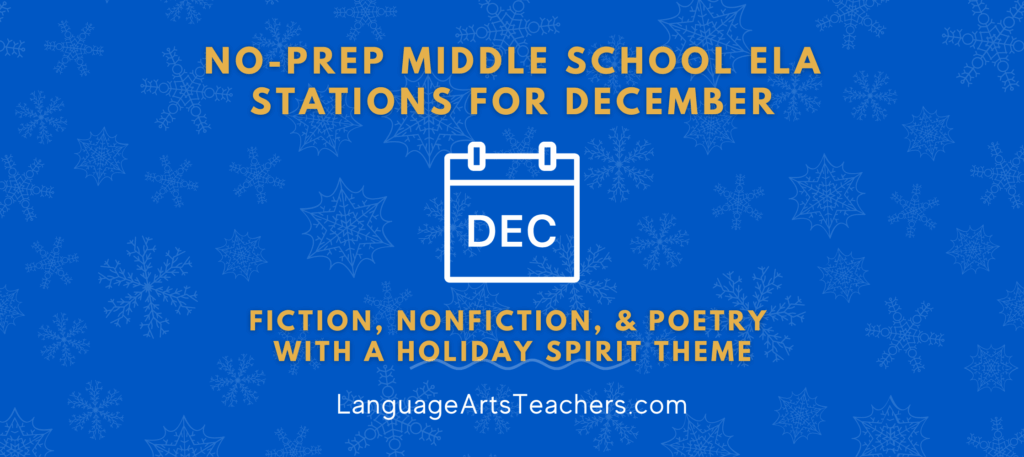“But I’m stuck!”
“They’re trying to trick us!”
“I have, like, NO idea!”
“None of the answer choices makes sense!”
“I think all the answer choices could be the right one.”
Do any of those^ frustrating comments from students sound familiar?
They’re the complaints that come from students when they feel stuck, like they’re in a jam when they’re working through a practice passage for test review purposes.
This is even after students are doing well with the most-often tested reading skills which I shared right here.
So what can we teach students to DO during a test when they feel like they’ve exhausted all their strategies and they’re in a jam?
The answer is this:
During Test Prep Palooza, Hillary Midgley of Teach Like Midgley and I dove into this exact issue with no-prep steps to take that’ll fill our students with confidence.
It’s almost intuitive for us as teachers to know what to do when we find ourselves in a jam as we read and try to comprehend—-graduate-level coursework, estate planning documents, or even a traffic ticket lol. We know we have options, choices, and strategies to understand that which we don’t understand upon first glance.
But it’s sometimes difficult to articulate exactly what that means for students when they find themselves in a jam on a test, though.
Hillary’s tips give us the tools to give our students so that when they inevitably find themselves in a jam (whether it’s a middle school reading test coming up or a real-life reading situation much later in life), they’ll be able to handle it without panicking.
Here are a few steps you can share with your students when they find themselves “stuck” during a test (but get your ticket to Test Prep Palooza because Hillary shares checklists, tip sheets, and more no-prep specifics that you have to see and hear to really “get it”).
STEP 1
As a teacher, what do you already know for sure about your state’s test?
- Will students be able to flip through the whole reading test once they’ve got their hands on it?
- Will they be able to see the test questions before reading the passage?
- Does the test have little “stop” signs after each passage / question set to where they can or can’t continue?
- Will there be scratch paper that they can use? Do they have options for what they might be able to do with that in order to help themselves?
- When they finish the test, can they still go back to other sections if they want to?
It’s the unknown that can cause a lot of stress and anxiety, so step one is just knowing the answers to those types of questions, first. Then, do a mini-mock test so students get to implement hands-on. It’s memorable and meaningful rather than reading to them a list of “do’s and don’t’s ahead of time).
Even if your students have a test every year in nearly every subject area, consider whether or not your students are new to your district or state. Or maybe they’re coming from a different type of school (private to public, or public to private, etc.) Don’t assume they’ve all had the exact same testing experience in the past and that they’ve got it—maybe so, but maybe not.
STEP 2
Knowing there will likely be questions on a test that cause students to feel stuck, give them the strategy ahead of time to “retrace their steps.”
Just like we do when we misplace our car keys, or can’t find that mug of coffee we keep heating up and leaving in the microwave, we can retrace our steps during a testing situation. And this is something you can model for them ahead of time!
Think-aloud example based on a test question that asks students to choose the answer that best represents the counterclaim:
“Hmm. I can’t remember what counterclaim means so now I can’t even answer the question. Ugh! I’m so frustrated!
Whew. Deep breath.
Ok. When was the last time I remember hearing it? Or seeing it?
Oh, we did that project with the speeches last month. I was in a group with those other kids. Oh yeah, and that poster (anchor chart) was on the wall over by the window (looks at the spot on the wall where it was posted before).
Um… And we had to compare the two speakers’ viewpoints in the speeches. They disagreed with each other. One was claiming…
Oh yeah! Ok, so a counterclaim is the other opinion, like the argument about the other side.”
Think-aloud example based on a test question that is several sentences long, and feels confusing to read much less understand what they’re supposed to actually do:
“What the heck! This is a question? It’s like a paragraph long!
Deep breath. Ok. I can do this.
I’m gonna circle the words that seem important, even though I don’t get what it’s even asking.
Hmm. I’ll circle bias. And compare. And difference. Um… And quote. Oh, and claim. Annnnnnnd probably evidence. Oh, text evidence. Got that, too.”
^^^That little exercise causes the student to physically DO something about the initial confusion rather than sitting and letting the panic build. The simple act of circling academic terms in the question allows the student to start building momentum toward solving a problem. It also forces the student to slow down and reread which solves some comprehension problems pretty quickly.

STEP 3
What about scratch paper? My students have access to it but they don’t use it and honestly, I’m not even sure what to have them do with it on a reading test.
This is a question both Hillary and I hear ALL the time, so we also addressed it during our Test Prep Palooza session. Here’s what Hillary recommends in terms of how to help our students understand the benefits of scratch paper during a reading test:
- List the question numbers that you want to skip so you can go back later (duh). But don’t stop there! Jot a quick note-to-self about what’s tripping you up. Maybe it’s just the word “convey” in the test question. Perhaps it’s about a chart or diagram that you’re unclear how to interpret. Don’t write a whole paragraph or even a sentence—you likely don’t have time, anyway. Just a word or two so that if you encounter that same type of word later on in the test, you can check to see if there’s anything there that jogs your memory.
- Use the scratch paper to list ideas or information before you start reading.
For instance, maybe you open the test and the first passage is a poem. And maybe you tend to get poetry terms mixed up and you’re a little panicky. So instead of reading right away, jot down the academic poetry terms you think you might want to remember first.
Fig. language (like simile, metaphor).
Imagery (what is imagery again? Oh yeah, like the five senses)
Stanzas, not paragraphs
Read sentence by sentence instead of line by line.
It’s like creating your own little ‘cheat sheet’ ahead of time to build confidence and to sort out your thoughts “…before the test has a chance to trick you” as one of my students once told me, ha ha!
- If the concept of “theme” is confusing for students (and you can bet there will be a “theme” question or a “central message” question for practically every passage), then you can get in front of it with scratch paper.
For this, students can jot down (copy) the title of the selection. This quick act of writing helps the title sink in more than just skimming over it before reading. Oftentimes, the title itself is a clue to the theme of the selection.
After reading the passage but before jumping into the questions, go back to the scratch paper and jot down other ideas for what the title could have been. Even just one or two other title ideas will help students separate summaries from themes, which they mix up too often.
Tests love to ask questions—or variations of questions—like, “Which of the following would be the best alternative to the title of the selection?” Or, “Which of the following best represents the central message (or theme) of the selection?” So getting ahead of it by teaching students to do this on their own before diving into the actual test questions puts them on the offense instead of feeling like they’re always on the defense, struggling with tricky test questions and answer choices that all sound the same.
The tips and strategies shared here are just a small handful of what Hillary and I discussed during Test Prep Palooza. For more details, ready-made resources, and no-prep strategies about test prep, join us right here so you can take advantage of the engaging test prep materials we’ve organized for Middle School Reading & Writing Teachers.





